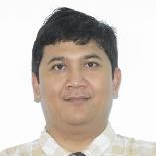
Mochamad Hariadi
Work place: Department of Electrical Engineering, Faculty of Industrial Technology, Institut Teknologi Sepuluh Nopember (ITS), Surabaya, 60111, Indonesia
E-mail: mochar@ee.its.ac.id
Website:
Research Interests: Computer systems and computational processes, Computational Game Theory, Computer Vision, Computer Networks, Image Processing, Data Structures and Algorithms
Biography
Mochamad Hariadi. He had his undergraduate degree (ST) in Electrical Engineering from Institut Teknologi Sepuluh Nopember, Surabaya, Indonesia in 1995, and Master (MSc) in School of Information Sciences, Dept. of Intelligent Sciences, Tohoku University, Japan, in 2003. He had his Doctoral degree (PhD) from School of Information Sciences, Dept. of Computer and Mathematical Sciences, Tohoku University, Japan, in 2006.
Dr. Hariadi’s research area of interests are computational intelligence, computer vision, video and image processing, game technology, big data and internet of think.
Author Articles
Multi-Character Fighting Simulation
By Sukoco Retantyo Wardoyo Agus Harjoko Mochamad Hariadi
DOI: https://doi.org/10.5815/ijisa.2018.08.01, Pub. Date: 8 Aug. 2018
In the development of and research into multi-character fighting computer games, Non-Player Characters (NPCs) frequently seem less intelligent owing to them having a single focus. As such, multi-character fighting becomes one-on-one fighting; one character will encounter another character only once the previous opponent is defeated. This study develops a new model in multi-character fighting, in which each NPC can simultaneously fight against many characters. Following this model, each character becomes an agent that makes his own decisions. The first advantage of this model is the integration of multi-character behaviors in fights. Each character can seek out enemies/opponents, select one target opponent, avoid obstacles, approach the target opponent, change the target opponent, and then defeat the opponent or be defeated by the opponent; in other words, each character can thus fight against many opponents. All of the behaviors in the fight take place automatically. The second advantage of this model is that each character does not only focus on the opponent being targeted, but also on the other opponents surrounding him. Each character can move from one opponent to another, even when the target opponent is not yet defeated. The third advantage of this model is that each character can move to another fight cluster, thus ensuring that fights seem more dynamic. This research has experimented with the model using a 3D application that can run on personal computers or smart phones.
[...] Read more.Other Articles
Subscribe to receive issue release notifications and newsletters from MECS Press journals